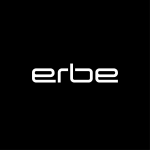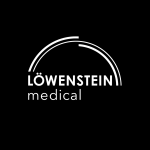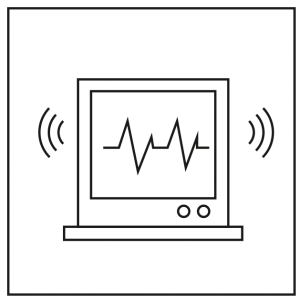Sound for
Healthcare
Sound for
Healthcare

Tagtäglich werden im Bereich der Medizintechnik sowohl das verantwortliche Personal als auch die Patienten einer Vielzahl von akustischen Reizen ausgesetzt, denen sie sich nur schwer entziehen können. Diese Reize stellen daher einen wichtigen, psychologischen Parameter für das entsprechende Umfeld dar. Eine typische »medizinische Geräuschkulisse« setzt sich aus den personalbedingten Betriebsgeräuschen (Konversationen, Arbeitsgeräusche etc.) sowie den unterschiedlichen, vorgeschriebenen akustischen Alarm- und Warnsignalen der jeweiligen Geräte zusammen. Diese akustischen Signale sind wichtige Absicherungsmaßnahmen für das medizinische Personal und den Patienten.
–
Every day in the field of medical technology both the responsible staff and the patients are exposed to a multitude of acoustic stimuli, which they find difficult to escape. These stimuli therefore represent an important psychological parameter for the corresponding environment. A typical „medical background noise“ consists of the personnel-related operating noise (conversations, working noises, etc.) as well as the different, prescribed acoustic alarm and warning signals of the respective devices. These audible signals (or „healthcare sound“) are important safeguards for the medical staff and the patient.



Dental

Endoprotetics

Endoscopy

HF surgery

Homecare

Ophthalmology

Unsere UX-Sound-Design-Expertise in den Bereichen Medical, Healthcare und Homecare erstreckt sich von Beatmung/Respiration, Endoprothetik (z.B. Robotik & Navigation) über Diagnostik (z.B. Blutanalyse), Elektro- oder Katarakt-Chirurgie, Zahnprothetik bis hin zur Telemedizin. In interdisziplinären Designteams eruieren wir benutzerfreundliche sowie normgerechte Audio-Design-Ansätze (insbesondere bzgl. den Normen DIN EN 60601-1-8) in den unterschiedlichsten Fachgebieten.
Our UX sound design expertise in the medical, healthcare and homecare industries includes respiration/ventilator, endoprosthetics (e.g., robotics & navigation), diagnostics (e.g., blood analysis), electrical or cataract surgery, dental prosthetics and telemedicine. In interdisciplinary design teams, we determine user-friendly and standard-compliant audio design approaches (in particular with regard to the standards DIN EN 60601-1-8 / IEC 60601-1-8) in a wide variety of specialist fields.
Problem
Aus Patientensicht irritieren die Töne oft mehr, als es den Geräteherstellern bewusst ist. Eine durchdringende Klanggestalt kann beispielsweise kontraproduktive Einflüsse auf eine Untersuchung ausüben und im schlimmsten Fall dem Patienten in einer harmlosen Situation das Gefühl einer kritischen vermitteln.
–
From the patient’s point of view, the tones irritate more often than the device manufacturers are aware of. For example, a pervasive sound shape can have a counterproductive impact on an exam and, in the worst case, can make the patient feel critical in a harmless situation.


Solution
In Situationen visueller und haptischer Auslastung wird der Hörkanal vom Personal zur zusätzlichen Patientenbeobachtung genutzt und unterstützt die multimodale Interaktion. So können akustische Signale insbesondere auf der Intensivstation einen wertvollen Beitrag leisten.
–
In „hands-busy-eyes-busy-situations“ the hearing channel is used by the staff for additional patient monitoring and supports the multimodal interaction, which in turn facilitates the workflow and decision-making processes and reduces the stress level. This is how acoustic signals can make a valuable contribution.
Telemedicine / Telehealth
Die Telemedizin dient bei einer räumlichen oder zeitlichen Distanz zur Überbrückung zwischen einem Arzt, Apotheker oder Patienten oder zwischen zwei sich gegenseitig beratenden Ärzten mittels digitaler Telekommunikation. Die eingesetzten Anwendungen sind hierbei Apps in welchen via Text-Messenger auch Audio- oder Videochats zum Einsatz kommen. Des Weiteren steigt aktuell der Bedarf an Augmended bzw. Mixed-Reality-Anwendungen. Akustische oder verbale Hinweise unterstützen dabei die Gebrauchstauglichkeit und optimieren das Benutzererlebnis.
–
Telemedicine (or telehealth) is used to bypass a spatial or temporal distance between a doctor, pharmacist or patient or between two doctors advising each other by means of digital telecommunication.
The implemented applications are apps in which audio or video chats are also used via text messenger. Furthermore, the demand for augmented or mixed reality applications is currently increasing.
Audible or verbal instructions support the usability and optimize the user experience.

The benefits of good sound design in medical devices
In the medical field, sound design can be used as a powerful tool to help improve patient outcomes. It can create an environment of trust, comfort and safety for patients, while also providing psychological and physiological benefits. For example, tonality is a persuasive element in sound design that can be used to evoke feelings of calmness and reassurance. A well-crafted sound design can make complex procedures less intimidating, while also helping to reduce patient anxiety. In addition to tonality, the use of natural sounds in medical devices has been proven to reduce stress levels and encourage relaxation. Studies have shown that patients with high levels of stress often experience physical manifestations such as increased heart rate and blood pressure. By using soothing sounds like nature recordings, or even music composed specifically for medical applications, these physical symptoms can be reduced and helped lead to better outcomes. Finally, carefully crafted sound design can help improve communication between care teams and patients. The use of clear audio cues during critical events, such as surgery or medical emergencies, ensures that everyone involved understands what is happening at any given moment. This improved communication helps ensure the best possible outcome for the patient in these situations. Overall, good sound design plays an important role in improving patient outcomes in healthcare settings. Tonality is a powerful tool that can be used to evoke feelings of calmness and reassurance while also reducing physical stress responses. Natural sounds can further reduce stress levels while also improving communication between care teams and patients during critical events. With all these benefits combined, it’s easy to see why good sound design is so important in the medical field!